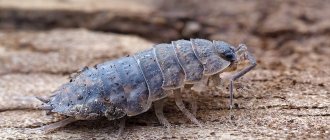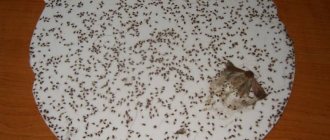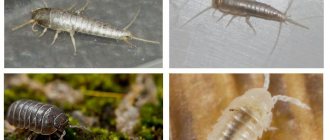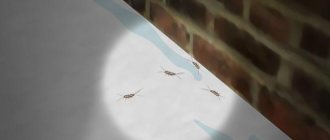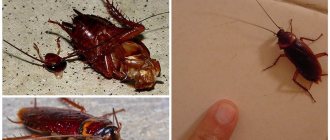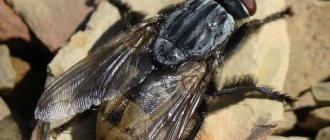The animal world is home to many parasites. They differ in size, habitat and danger to their host.
Many of them exist on the host for years, eating particles of skin, hair and sucking blood. Some are more dangerous, capable of crippling and even killing the host.
Tongue woodlice
Tongue woodlice is considered one of the most disgusting and unusual parasites, mainly living in the mouth of fish.
An unusual way of parasitism
Unusual creatures have always been of particular interest to researchers. In this regard, the tongue-eater woodlice is simply unique. No other living creature behaves this way.
The parasite finds a host literally in the first days of life. It enters the oral cavity through the gill slits or directly through the mouth. With the help of sharp claws, the arthropod attaches itself to the tongue, digs into it, and begins to suck out blood. At the same time, the fish does not show concern. However, at this stage it is too early to talk about anything unusual. Many parasites feed on the blood of their hosts.
The fun begins later. The fish's tongue gradually atrophies until, bloodless, it dies completely. But the woodlouse will not abandon the fish; it will show a kind of loyalty until the end of its life. Moreover, over time, the body of the woodlice completely takes over all the functions of the tongue it has destroyed. The fish does not feel discomfort, hunts, captures food and eats, as it did before meeting the parasite.
The arthropod does not pretend to prey on fish and continues to be content with little - blood and mucus. Probably, the saliva of woodlice contains painkillers, because the fish does not feel pain. Some species eventually stop consuming blood altogether, being content with mucus alone.
Scientists studying the lifestyle of these creatures have found that in nature there are no cases where a woodlice would leave its owner and find another. She will stay with the fish until she dies of old age. In rare cases, biologists find two woodlice in the mouth of large fish, which peacefully coexist side by side. Even in this case, the fish feels fine.
After the death of a woodlice, the fish's tongue does not recover. She has to adapt to doing without him and without the assistant who replaced him.
Features of the Tongue Cancer
There are many species of Cymothoa in nature, but only Cymothoaexigua (in English tongue-eatinglouse, which means tongue-eating louse) is capable of eating and replacing an organ.
The crustacean became known to the world because of its unique ability to parasitize the host’s body. Today this is the only creature capable of completely replacing an organ lost through its own fault. In appearance, it is very similar to woodlice, which grow in damp basements, attics and in the apartments themselves. A distinctive feature of the crustacean is its milky body.
Tongue woodlice
The parasite chooses the pink snapper, which lives off the coast of California, as its victim. Entering the fish's mouth through the gills, the small crustacean instantly attaches to the tongue using special claws. At the initial stage of parasitism, the main source of nutrition for the pest is blood sucked from the tongue.
Gradually becoming bloodless, the organ completely atrophies over time. However, the fish does not die; from this moment on, the role of the tongue begins to be played by the “settler” himself. Many people will think that in this way the crustacean will absorb all the host’s prey. However, this is far from true: the woodlice continues to live in the fish without interfering with its nutrition. All food consumed by the prey passes by the crustacean. The animal partially drinks the blood of the victim and is content with fish mucus, without causing much damage or discomfort to it. According to scientists, the snapper uses the services of the parasite without even knowing about the substitution.
Appearance
The tongue-eating woodlouse looks like most members of the family. It has an elongated, slightly flattened, segmented body, similar to a cocoon, equipped with several pairs of small limbs. In front, a small head with a pair of dark eyes peeks out from under the shell. Upon closer inspection, you can detect the oral apparatus.
Woodlice are white or yellowish in color.
Reproduction
No less amazing is the reproduction of tongue-eating woodlice. A small male enters the body of the fish. Gradually he transforms into a female. Then everything happens according to a simple scenario. The male enters the fish's mouth, finds a living female there, and mating occurs.
Interesting!
If the prey is large, the male may remain living with the female in the mouth of one owner, but this rarely happens. A fisherman who catches an infected fish will remember this encounter for the rest of his life. Opening his mouth slightly to remove the hook, the fisherman will see small creatures with black round eyes. You will definitely want to eat such prey.
After mating, the female lays eggs in a special pouch on her abdomen. After their birth, the cubs immediately leave the fish’s mouth, look for a host, and develop independently away from the female.
Woodlice eating tongue
Tongue-eating woodlouse in cinema
This unusual parasite has attracted the attention of filmmakers. In 2012, the American horror film “The Bay” premiered, the plot of which revolves around a tongue-eating parasite. As conceived by the authors, the action takes place in a bay into which industrial waste is dumped. Environmental pollution caused mutations, and woodlice became dangerous to people. Tongue eaters no longer hunt fish, they are interested in larger game. The effect is enhanced by footage shot on an amateur camera - they make the film more realistic.
Are woodlice dangerous for people?
It is believed that tongue lice cannot harm humans. But in theory, if someone tries to eat the infected fish, the creepy creature might bite them. These creatures are truly dangerous only in the 2012 American horror film The Bay. According to the plot, under the influence of waste from a poultry farm, tongue lice begin to mutate and turn into 20-centimeter monsters. Not a giant, of course, but this was quite enough for him to begin to pose a mortal danger to people.
Trailer for the film "The Bay"
If you are interested in science and technology news, subscribe to our channel in Yandex.Zen. There you will find articles that were not published on the site!
As you can see, some parasites may not cause much harm to their hosts. And some of them can even give them youth and a carefree life. I recently talked about how some ants bring parasite-infested food into their home, after which they gain something like “eternal youth.” But for a carefree life, they ultimately pay with their lives. If interested, read this material.
Danger to humans
Can history repeat itself in real life? Scientists assure that there is nothing to fear. The tongue-eating Cancer is only interested in fish. In addition, it can only live in an aquatic environment.
However, the insidious woodlice may well dig into your finger in defense. Its bites are not dangerous, but quite painful. And there is nothing pleasant in such an acquaintance. Agree, finding such a whitish surprise with eyes in the mouth of a caught fish can be a real shock. By the way, if a similar incident happens to you while fishing, you should not throw away the fish - it is suitable for food. But it is better not to remove the parasite from the fish’s mouth with bare hands. Fortunately, such creatures are not found in our reservoirs.
Coelacanth.
The coelacanth, or coelacanth, is a large deep-sea fish whose discovery in 1938 became one of the most important zoological discoveries of the 20th century. Despite its unattractive appearance, it is remarkable in that for 400 million years it has not changed its appearance and body structure. In fact, this unique relict fish is one of the oldest living creatures on planet Earth. She's even older than dinosaurs! Coelacanth lives at a depth of up to 700 meters in the waters of the Indian Ocean. The length of the fish can reach 1.8 meters and weigh more than 100 kilograms, and the body has a beautiful blue tint. Since coelacanth is very slow, it prefers to hunt at great depths, where there is no competition with faster predators. These fish can swim backwards or belly up. Despite the fact that the meat of the coelcanth is inedible, it often becomes a desired prey among local poachers. Currently, the coelacanth or coelacanth is endangered.
The tongue as part of the fish's body
For most, this organ is present and is part of the digestive system, and often an assistant in catching future food and one of the many places on the fish’s body where taste buds are located. The size, shape and capabilities of this organ are different, as are the representatives of this group of animals themselves, which includes tens of thousands of species.
However, there are representatives deprived of such an evolutionary tool, but they too have adapted and found an opportunity to implement the functions of language in practice differently. For example, the mudskipper, which often hunts in the air, transferred similar mechanisms from the water element.
In a situation typical for most fish, the tongue draws in water and food along with it. Coming to land, the fish takes water into its mouth and, seeing prey, spits out the liquid in parts, and then sucks it back along with the food. And in this case, it is not so important whether the fish have a tongue - photo and video observations have proven that even in the absence of this part of the body, the fish are not going to remain hungry.
Skillful fisherman.
Lasiognathus is a genus of deep-sea ray-finned fish of the Thaumatichthidae family, found in the Pacific and Atlantic oceans. Among ichthyologists it is known under the unofficial name “skillful fisherman”. Lasiognathus received its nickname for a reason. This deep-sea fish has an almost real fishing rod, with which it hunts other fish and invertebrates. This device consists of a short fishing rod (basal bone), fishing line (modified dorsal fin ray), hook (large skin teeth) and bait (luminous photophores). This gear is truly remarkable. In different subspecies of Lasoignatus, the structure of the fishing rod can vary from short (up to the middle of the body) to long (much longer than the body). These fish live at great depths - about 4 kilometers.
Are fish capable of communication?
A separate question is whether fish have a language that serves as a means of mutual exchange of information. And here “silent” creatures are able to surprise the uninitiated. In addition to non-verbal means inherent in all living beings (in fish, these are color and its changes, body gestures, manner of movement, smells and gland secretions), they have a wide range of sound signals, clearly audible even to humans and very different for different species.
For example, the signals of a mullet are similar to the clicking of a horse, and the horse mackerel makes sounds characteristic of a dog. The trigla is recognized as the most talkative - it practically does not shut up, sometimes grumbling, sometimes croaking.
Research has shown that all fish speak differently. Different species and individuals differ in the degree of talkativeness, just like people. However, part of their “speech” is outside the frequency range perceived by the human ear. Basically, underwater inhabitants give each other signals about a threat, the presence of food in a particular place, and report their location and direction of travel.
What prevents fish from speaking in the traditional sense when they have a tongue in their mouth? The absence of other important parts of the speech apparatus, namely the larynx and pharynx. They also lack vocal cords and moving lips.
There are widespread myths about fish’s lack of memory, the ability to think and, of course, the inability to make sounds. This gave rise to the allegorical name “fish language” for the communication system of the deaf and dumb. Another comparison is due to the veiled content of statements - “fish language” is sometimes called thieves’ jargon.
